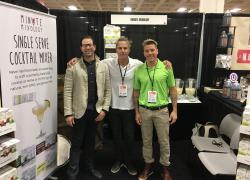Taking Control of Distressing Low Sexual Desire: A Patient’s Journey
She and her husband tried different types of stimulation, but nothing got her in the mood. "My lack of interest in sex was hard on my marriage. My husband wanted to be intimate, but I didn't. I missed that connection with him."
Amy is not alone in her experience. HSDD is a diagnosable medical condition that affects approximately 1 in 10 women in the U.S., with a profound impact on a woman's emotional state, her sense of self and her relationships.
"Trying to deal with the strain of low sexual desire was difficult. I talked to my husband about it and we looked for solutions together. Eventually, my doctor helped me enroll in a clinical trial for an HSDD investigational treatment."
"In the clinical trial, I received training on how to use an autoinjector to take the medicine at least 45 minutes before I anticipated sexual activity. I found the injection easy to use, it fit conveniently into my schedule and it put me in the driver's seat for when I wanted to take the medication. I felt empowered when my desire returned and started to look forward to being intimate with my husband again."
Following the clinical trial, Amy hoped she would one day have the choice of taking the medication again. In June 2019, the U.S. Food and Drug Administration (FDA) approved Vyleesi™ (bremelanotide injection) to treat hypoactive (low) sexual desire disorder (HSDD) in certain premenopausal women. Vyleesi is not indicated for the enhancement of sexual performance, but women will have another treatment option for HSDD when Vyleesi is available later this month.
In the clinical trials, the most common side effects were nausea, flushing, injection site reactions, headache and vomiting. Vyleesi should not be used by women with uncontrolled high blood pressure or heart disease.
AMAG Pharmaceuticals, the company launching Vyleesi, will offer co-pay assistance to help women access Vyleesi. Patients will be able to obtain their first four-pack of Vyleesi autoinjectors with a $0 co-pay, and refills for no more than $99. Under current government regulations, pharmaceutical companies cannot offer this type of program to patients insured by federal health care programs, including Medicare and Medicaid.
Amy says, "I am motivated to share my story because I want to encourage other women to talk to their healthcare providers about distressing low sexual desire and find out what treatment options are available. They should know they do not have to suffer in silence."
Women who may be experiencing symptoms are encouraged to visit Vyleesi.com and utilize a tool called the HSDD Symptom Checker. To verify diagnosis and to see if Vyleesi might be an appropriate treatment option for them, women are encouraged to speak with their healthcare provider (HCP). An open and honest conversation between a woman and her HCP is the first step to improving desire, reducing distress and getting back to a fulfilling sex life - something all women deserve.
IMPORTANT SAFETY INFORMATION
Do not use VYLEESI if you have uncontrolled hypertension, known heart disease or are taking oral naltrexone-containing products intended to treat opioid or alcohol addiction. Women who can become pregnant should use effective birth control during treatment with VYLEESI.
VYLEESI can cause serious side effects, including temporary increase in blood pressure and decrease in heart rate, severe nausea, and skin darkening that might be permanent.
The most common side effects of VYLEESI include nausea, flushing, injection site reactions, headache, and vomiting. But these are not all the possible side effects of VYLEESI; consult your healthcare professional for more information or visit Vyleesi.com for additional Important Safety Information.
You are encouraged to report negative side effects of prescription drugs to the FDA. Visit www.fda.gov/medwatch or call 1-800-FDA-1088.


